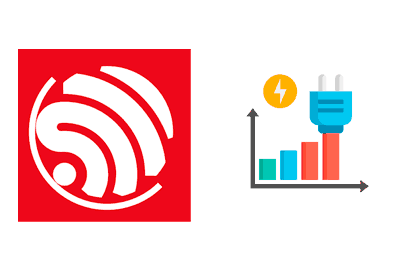Knowing and understanding the power consumption of the ESP32 is very important before embarking on a project with it.
In any electronics project, power consumption is one of the main parameters that significantly influences the design and execution.
This is even more important in the case of the ESP32, as it is a SoC designed for IoT applications. They typically operate continuously or depend on limited power sources, such as batteries.
The ESP32 is a very powerful SoC, with wireless communication options. So, at full power, it consumes quite a bit of energy. You can leave any “bare” battery for hours.
Therefore, it is essential to understand the factors that affect its power consumption and use effective strategies to optimize it.
Factors Influencing Energy Consumption
Operating Modes
The ESP32 offers several operating modes that influence its energy consumption.
These modes include:
- Active Mode
- Light Sleep
- Deep Sleep
We see it in this post read more
Clock Frequency
The ESP32 allows adjusting the processor clock frequency to reduce power consumption. By lowering the frequency, the processor executes instructions at a slower pace, which decreases energy consumption.
We see it in this post read more
Peripherals and Communications
Power consumption is also influenced by the peripherals and communications used. For example, enabling Wi-Fi, Bluetooth, and other peripherals consumes more energy than keeping them turned off.
Energy Consumption in the ESP32
Let’s look at the standard consumption values of the “conventional” ESP32 (without a version behind it), in different operating modes.
Consumption with radio on
Consumption with different types of wireless communication.
| Mode | Consumption |
|---|---|
| Transmit 802.11b | 240 mA |
| Transmit 802.11g | 190 mA |
| Transmit 802.11n | 180 mA |
| Receive WiFi | 100 mA |
| Transmit BT | 130 mA |
| Receive BT | 100 mA |
Consumption with radio off
Wi-Fi and Bluetooth off, only the consumption related to processing by the CPU.
| Frequency MHz | Consumption |
|---|---|
| 240Mhz | 30-68mA |
| 160Mhz | 27-44mA |
| 80Mhz | 20-31mA |
Consumption in sleep modes
Consumption in different sleep modes.
| Mode | Consumption |
|---|---|
| Light-Sleep | 800 uA |
| Deep-Sleep with ULP | 160 uA |
| Deep-Sleep without ULP | 10uA |
| Hibernation | 5uA |
| Power off | 1uA |
Energy Consumption in the ESP32-S3
Here are the standard consumption values of the ESP32-S3 in different operating modes.
Consumption with radio on
Consumption with different types of wireless communication.
| Mode | Consumption |
|---|---|
| Transmit 802.11b | 340 mA |
| Transmit 802.11g | 290 mA |
| Transmit 802.11n | 290 mA |
| Receive WiFi | 90 mA |
| Transmit BT | 130 mA |
| Receive BT | 100 mA |
Consumption with radio off
Wi-Fi and Bluetooth off, only the consumption related to processing by the CPU.
| Frequency MHz | Task | Consumption |
|---|---|---|
| 40 | IDLE | 18.8 mA |
| Single Core | 21.8 mA | |
| Dual Core | 24.4 mA | |
| 80 | IDLE | 36.1 mA |
| Single Core | 42.6 mA | |
| Dual Core | 47.3 mA | |
| 160 | IDLE | 42.3 mA |
| Single Core | 54.6 mA | |
| Dual Core | 64.1 mA | |
| 240 | IDLE | 47.6 mA |
| Single Core | 65.9 mA | |
| Dual Core | 81.3 mA |
Consumption in sleep modes
Consumption in different sleep modes.
| Mode | Consumption |
|---|---|
| Light-Sleep | 240 uA |
| Deep-Sleep | 8 uA |
| Power-Off | 1 uA |
The energy consumption values we have seen are extracted from official information and refer only to the consumption of the ESP32.
If your ESP32 is mounted on a board, with an LED, a voltage regulator, and who knows how many more things, that is NOT included.
